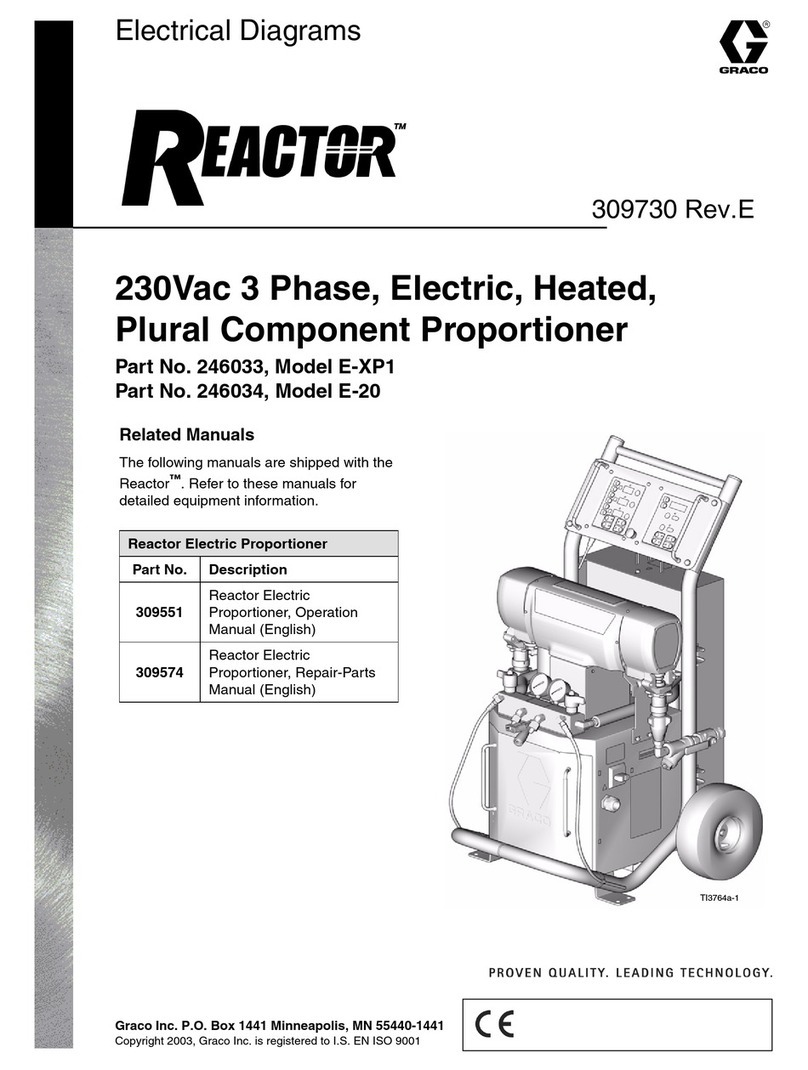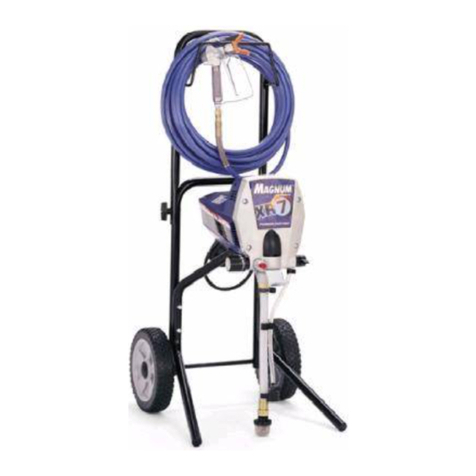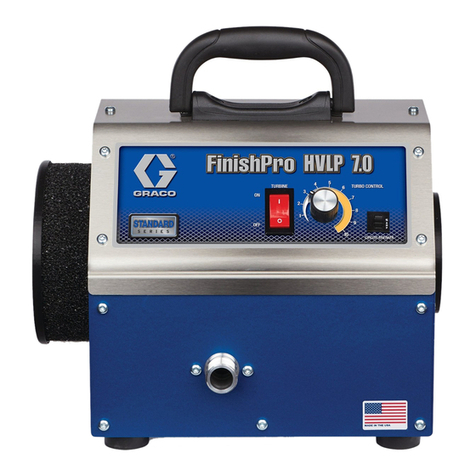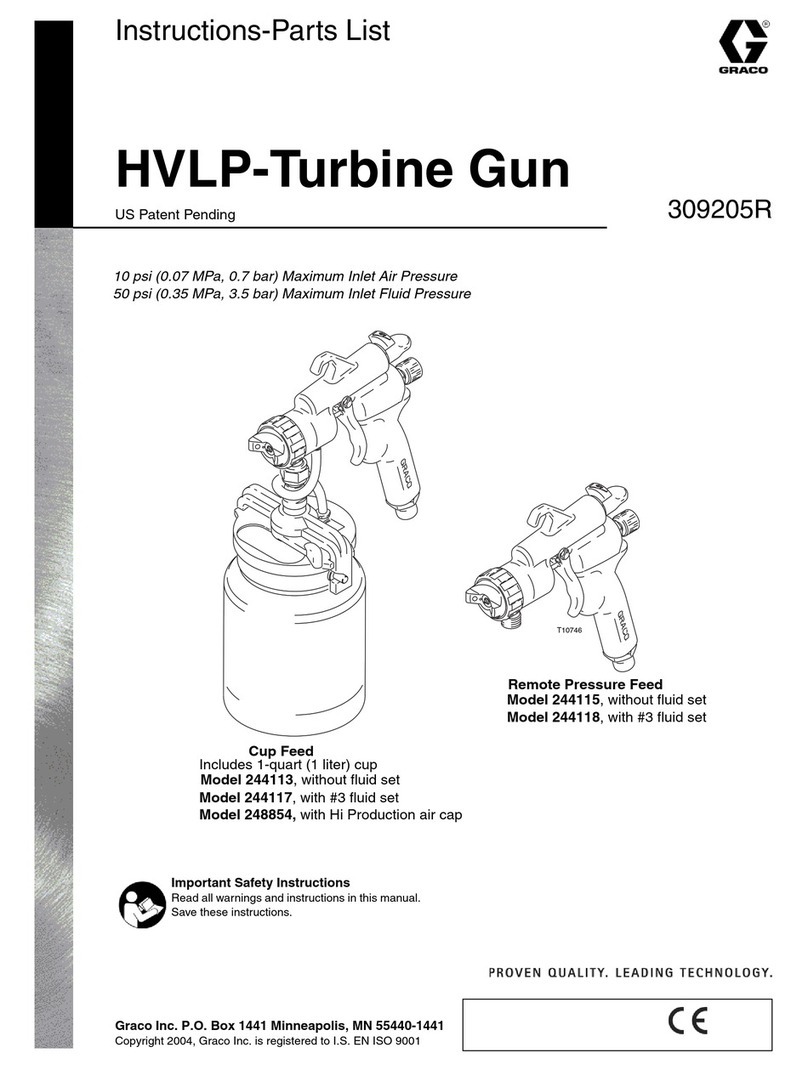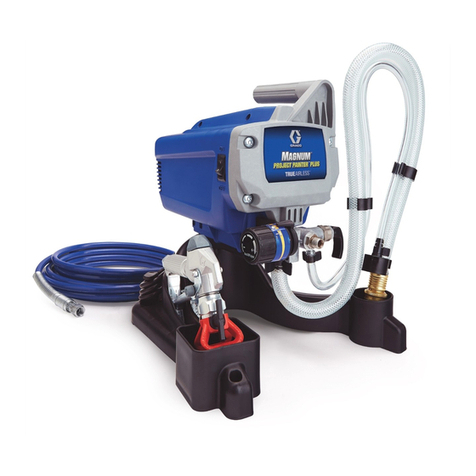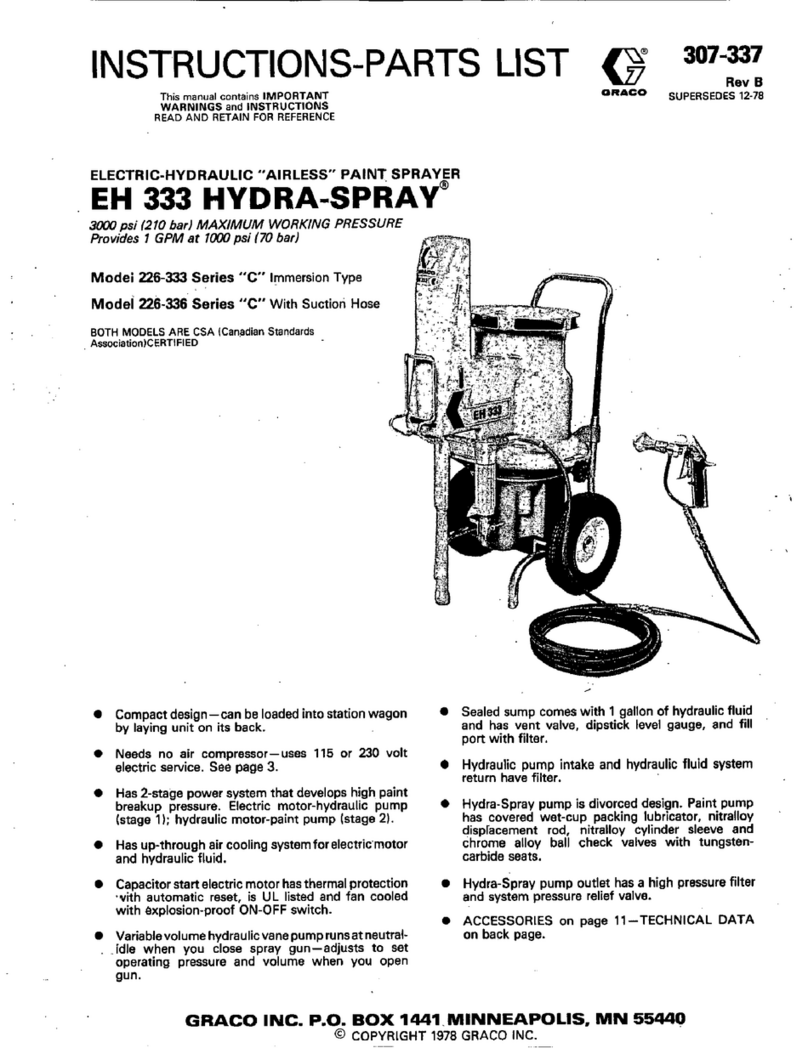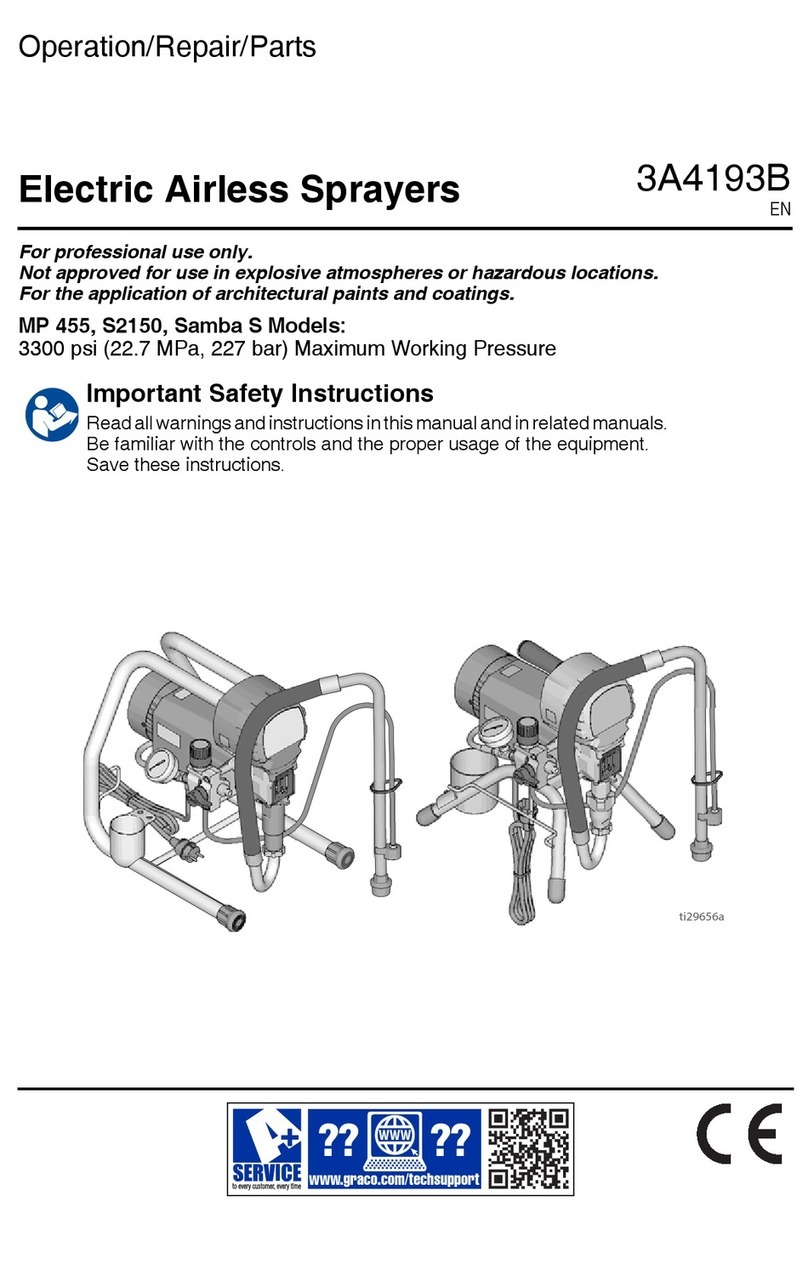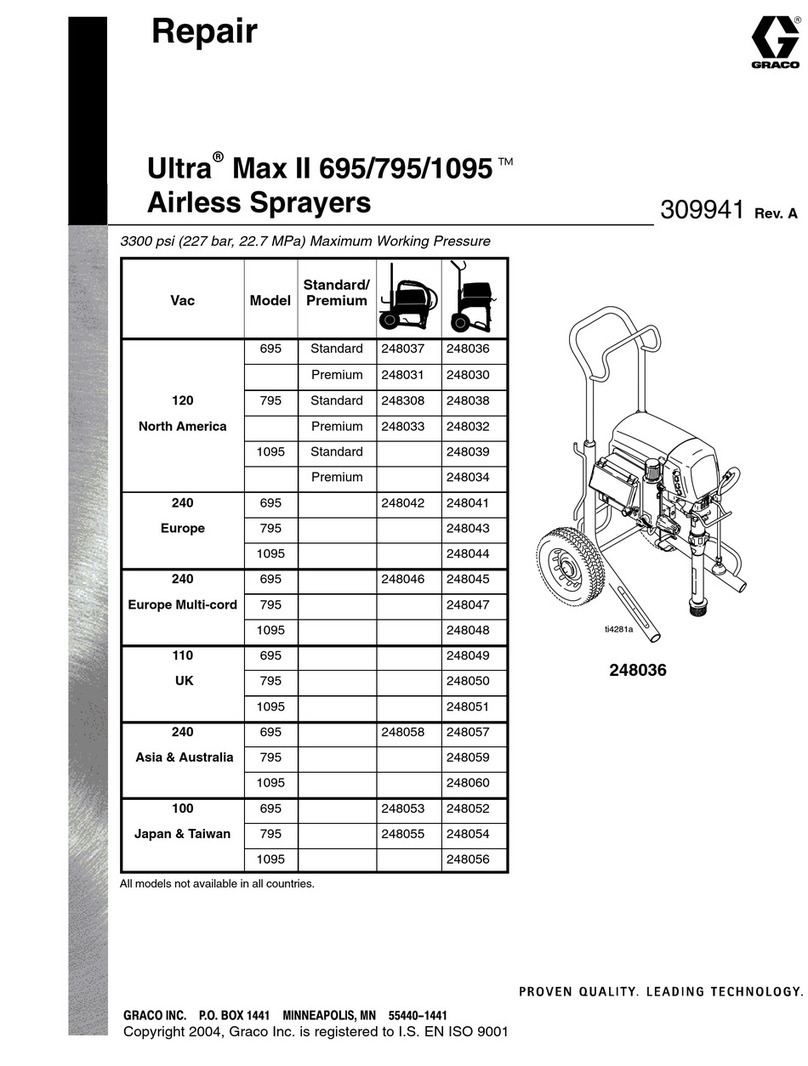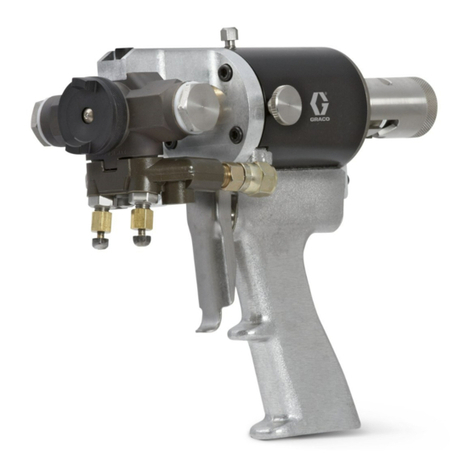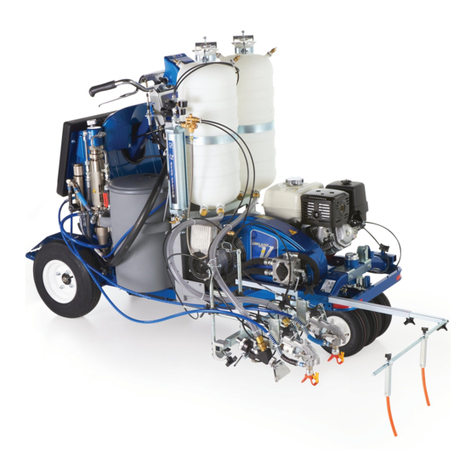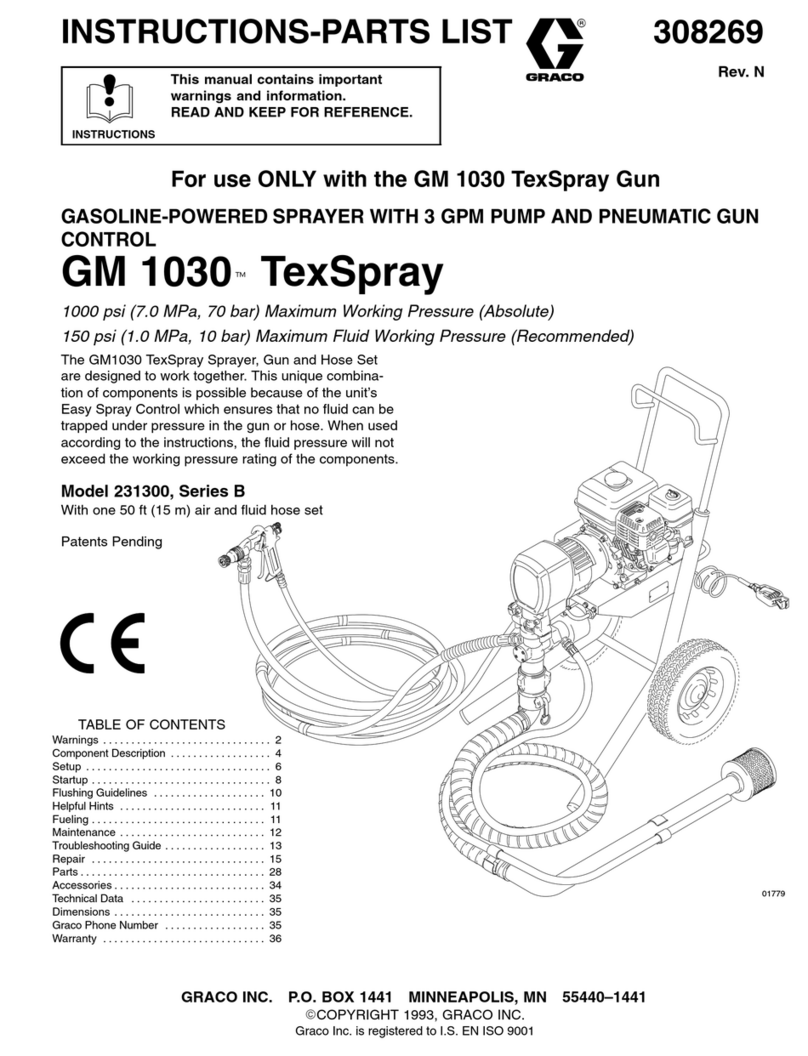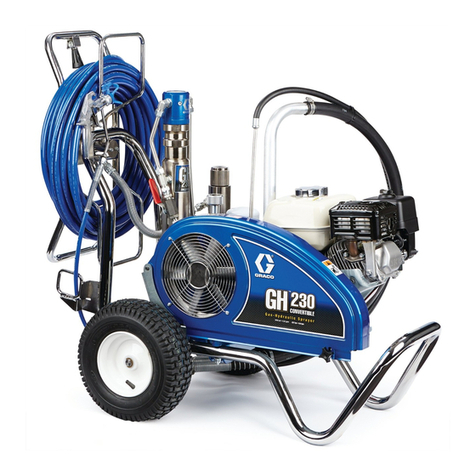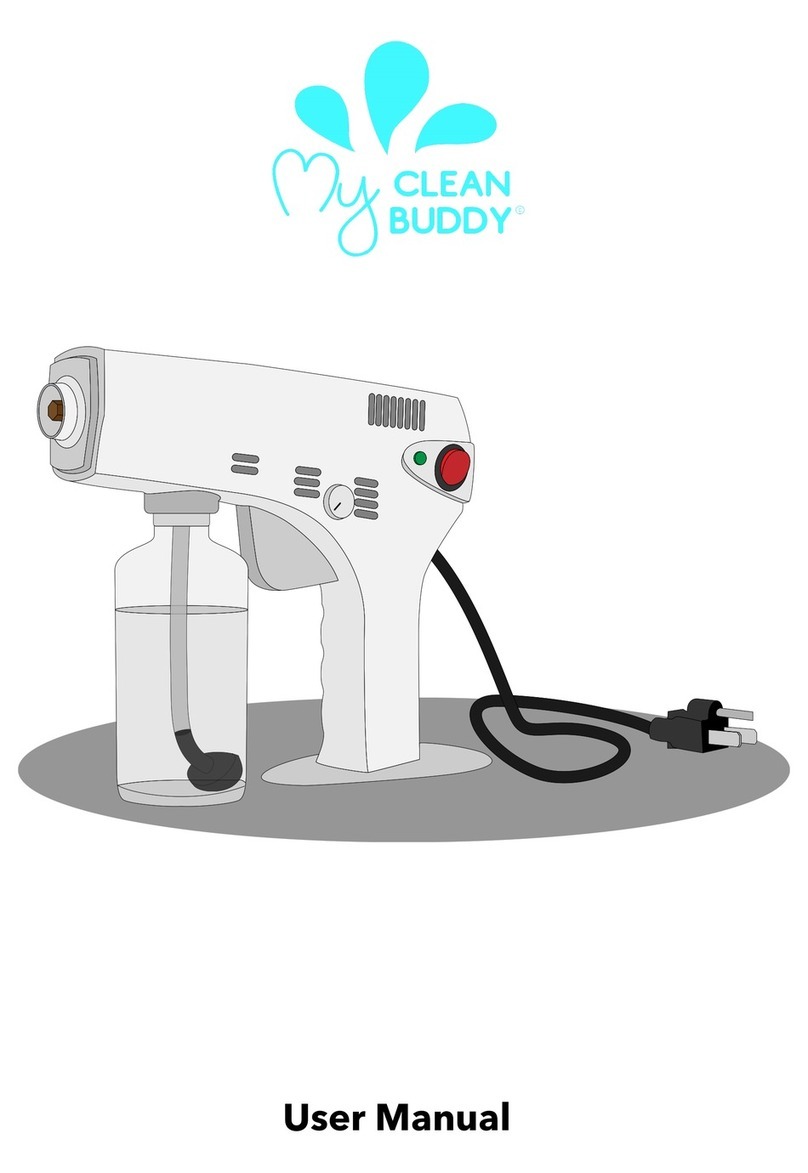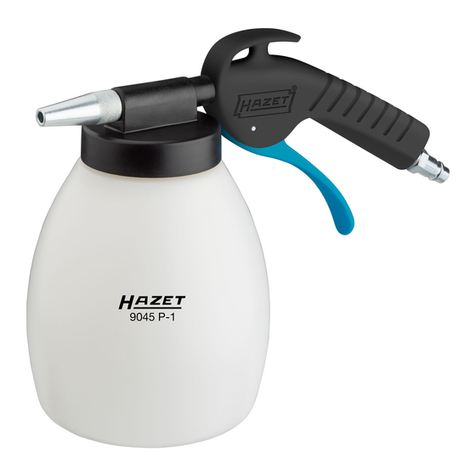
Moving
pam
can pinch
or
amputate your fingers or other body
parts.
KEEP CLEAR
of
moving
parts
when starting or operating
the
sprayer. Follow
the
Pressure
Rellet
Procedure on
page
4
before checking or sewicing any
part
of
the
sprayer, to prevent
it
from
starting accidentally.
General
Safety
Any
misuse of
the
spy equipment or accessofles. such
as
overpressurlzing. modifying
parts.
using incompatible chemi-
calsandfluids,orusingwomordamagedparts,cancausethem
toruptureandresultinfluidinjection,spiashingintheeyesoron
the
skin,
or
other serious bodily injury, or fire, explosion or
prop
eriy
damage.
cause
it
to malfunction.
NEVERalterormodifyanypartofthisequipment;doingsocould
CHECKallsprayequipmentreguiarlyandrepairorreplacewom
or damaged
parts
immediately.
Always wear protective eyewear, gloves, clothing and respirator
as
recommended by the fluid
and
solvent manufacturer.
System
Pressure
This
sprayer can develop
3OOO
psi
(210
bar)
MAxlMUM
WORK-
ING
PRESSURE.
Be
sure
all
spray equipment and accessories
used
are
rated to withstand the this pressure.
DO
NOT exceed
the
maximum working pressure
of
any
component or accessory
used in
the
swtem.
Fluid and
Solvent
Compatibility
Allchemicaisusedinthesprayerarechemicallycompatiblewith
mewettedpartsshowninthe~~~~~1~~~~~~~onpage38.~1-
ways
mad
the
chemical manufacturer's literature before using
them in this sprayer.
HOSE SAFETY
~~~~~~~~~~,~~~~~~~~~~~~~~~~~~~~~~~~
.....~
High pressure fluid in the hoses can
be
very dangerous.
If
the
hose develops
a
leak, split or rupture due
to
any kind of wear,
damage or misuse, the high pressure spray emitted
from
it
can
causeafluid injection injury or otherserious bodily injury orprop
erty
damage.
ALL FLUID HOSES
MUST
HAVE STRAIN RELIEFS ON BOTH
ENDSlThestrainreiiehheipprotectthehosefromkinksorbends
at or close to the coupling which can result in hose rupture.
TIGHTEN
ail
fluid connections securely before each use. High
pressure fluid can dislodge a loose coupling or aiiow high pres-
sure spray
to
be
emitted
from
the coupling.
NEVER use a damaged hose. Before each use. check the entire
hose for CUI?,,
leaks.
abrasion, bulging cover, or damage
or
movementofthehosecoupiings.Ifanyofthesewnditionsexist.
replacethe hose immediately.
DO
NOTtrytorecouple highpres-
sure hose or mend it with tape or any other device.
A
repaired
hose cannot contain the high pressure fluid.
HANDLE AND ROUTE HOSES CAREFULLY.
Do
not pull on
hosestomoveequipment. Keephosesciearof moving parisand
hotsurfacesofthepumpandgasengine.Donotusefluidsormi-
vents which are not compatible with the inner tube and cover of
the
tiose.
DO
NOT expose Graco hoses to temperatures above
180"
F
(82'
C) or below
-40'
F
(-40"
C).
Hose Grounding Continuity
Proper hose grounding continuity
is
essential
to
maintaining
a
grounded spray system. Check the electrical resistance of your
fluid hoses at
least
once
a week.
If
your hose does
not
have a tag
on it which specifies the maximum electrical resistance. contact
the hose supplier or manufacturer for the maximum resistance
limits. Use
a
resistance meter in the appropriate range for your
hose
to
check the resistance. If the resistance exceeds the
rec-
ommended limits. replace it immediately. An ungrounded or
poorly grounded hose can make your system hazardous.
Aim
read FIRE
OR
EXPLOSION HAZARD, below.
Static electricity is
created
by
the
flow of fluid through
the
pump
and hose.
If
every
part
of
me
spray equipment
Is
not properly
grounded,sparkingmayocwr.andthesystemmaybecomehar-
ardous.Sparkingmayalsooccurwhenpluggingin~unplugging
apowersuppiycordorusingagasoiineengine.Sparkscanignite
fumes from
solvents and
the
fluid being sprayed. dust particles
and
other flammable substances, whether you
are
spraying
in-
dwrsorouIdoors,andcancauseafireorexplosionandserious
bodily injury
and
properiy
damage.
usingthisequipment.STOPSPRAYlNG1MMEDIATELY.Check
Ifywexperlenceanystaticsparkingorevenasiightshockwhile
the
entire system for proper grounding.
Do
not use the
system
again until the problem has
been
identified
and
corrected.
Grounding
To
reduce the risk
of
static spar(ting, ground the sprayer and ail
dhersprayequipmentusedorloca1edinthesprayarea.CHECK
your
local
electrical
code
for detailed grounding instructions for
your area and type
of
equipment. BE SURE to ground all of this
spray equipment:
1.
Spr6yer:connectagroundwireandclamp(supplied)toaIrue
earth ground.
spilled
on
a
hot surface
can
ignite and cause
a
fire.
NWER
fill
the fuel tank
while
the
engine is running or hot. Fuel
ALWAYS pour
fuel
in
slowly
to avoid spilling.
Also
read FIRE
OR
EXPLOSION HAZARD. above. and FUELING on
page
6.
NEVERoperatetheengineinaclosedbuildingunlesstheengine
exhaust
is
piped outside.
The
exhaust contains carbon monox-
ide,apoisonous,odoriessandinvisiblegaswhichcancausese-
rious illness and even
death
of
inhaled.
2.
Fluidhoses:useonlygroundedhoseswithamaximumof500
ft(150m)combinedhoselengthtoensuregroundingwntinu-
iIy.
See
Hose Groundlng Continuity on
page
3.
3.
Spraygun:obtaingroundingthroughconnectiontoaproperly
grounded fluid hose and sprayer.
4.
Object being sprayed: according to imai code.
5.
Fluid supply
container:
according
to
local
code.
6.
All
solvent
pails
used when flushing, according to
local
code.
Use only metal
pails,
which are conductive.
Do
not place the
pail
on
a
non-conductive surface, such
as
paper or card-
board. which intempts the grounding continuity.
7.
To
maintain grounding continuity when flushing
or
relieving
pressure,aiwayshoidametalpartofthegunfirmlytotheside
of
a grounded metal pail, then trigger the gun.
Flushha Safetv
Reduce~eriskoifiuidinjectioninjury,staticsparking,orspiash-
Ing by following the flushing procedure given on page
14
of this
manuai.FoliowthePRESSURERELIEFPR0CEDUREonpage
4.
and remove the spray tip before flushing. Hold
a
metal pafl-of
the gun firmly
to
the side
of
a grounded metal pail and use the
lowest possible fluid pressure during flushing.
United States Government safety standards have been adopted
under
the
Occupational Safety and Health Act.
mese
standards
struction Standards. Part
1926
-
should be wnsuited.
-
particularly the General Standards, Part
1910,
and the Con-
